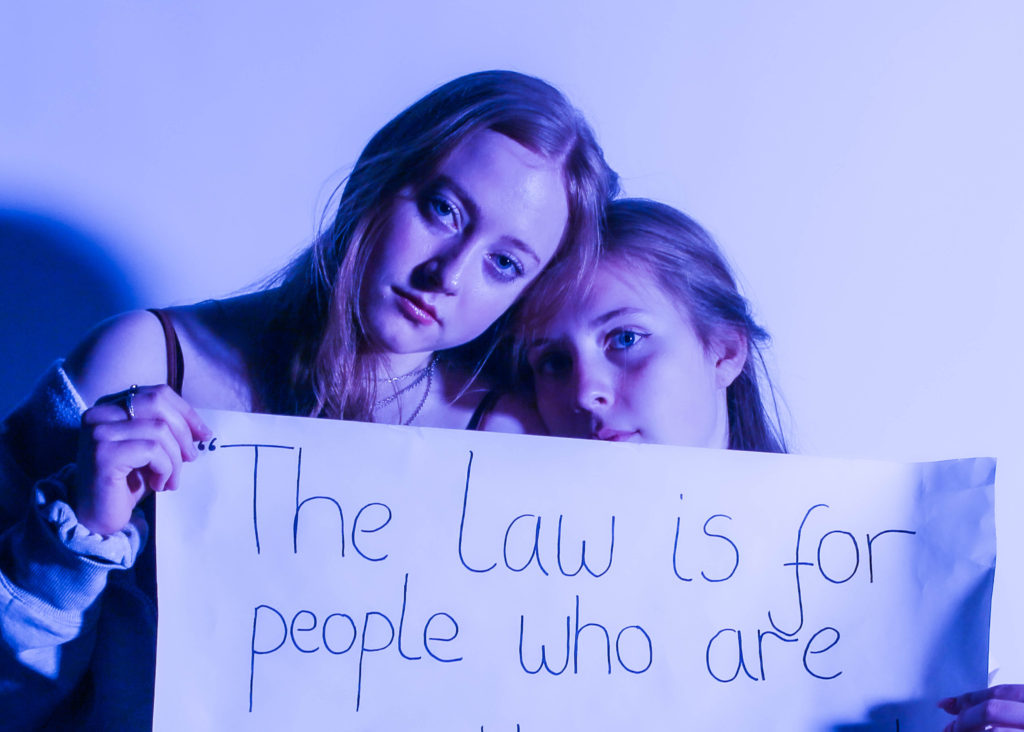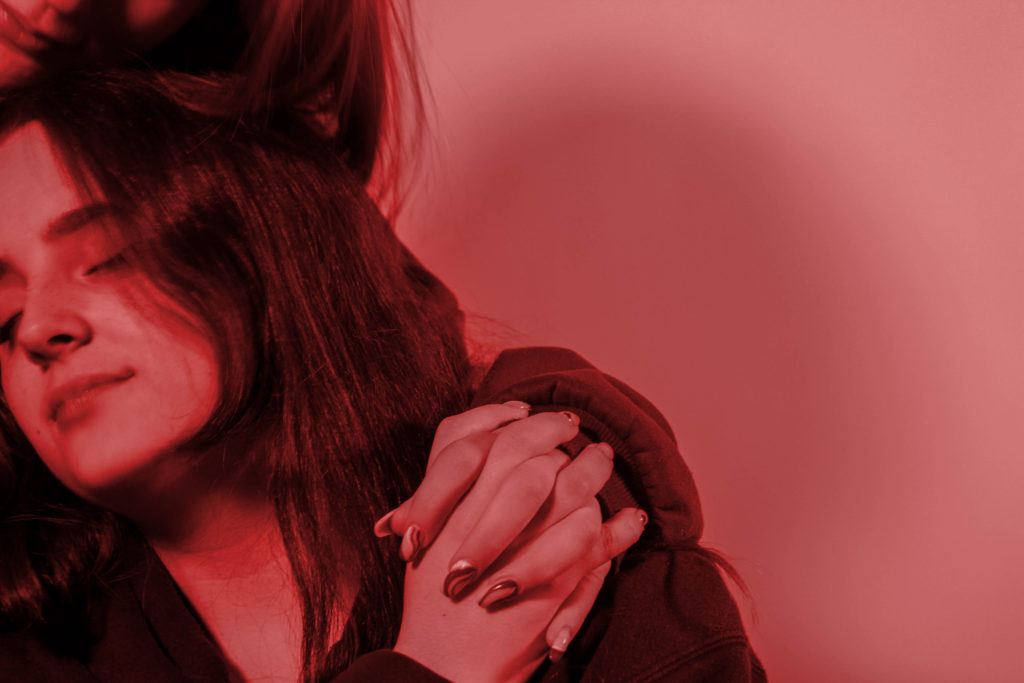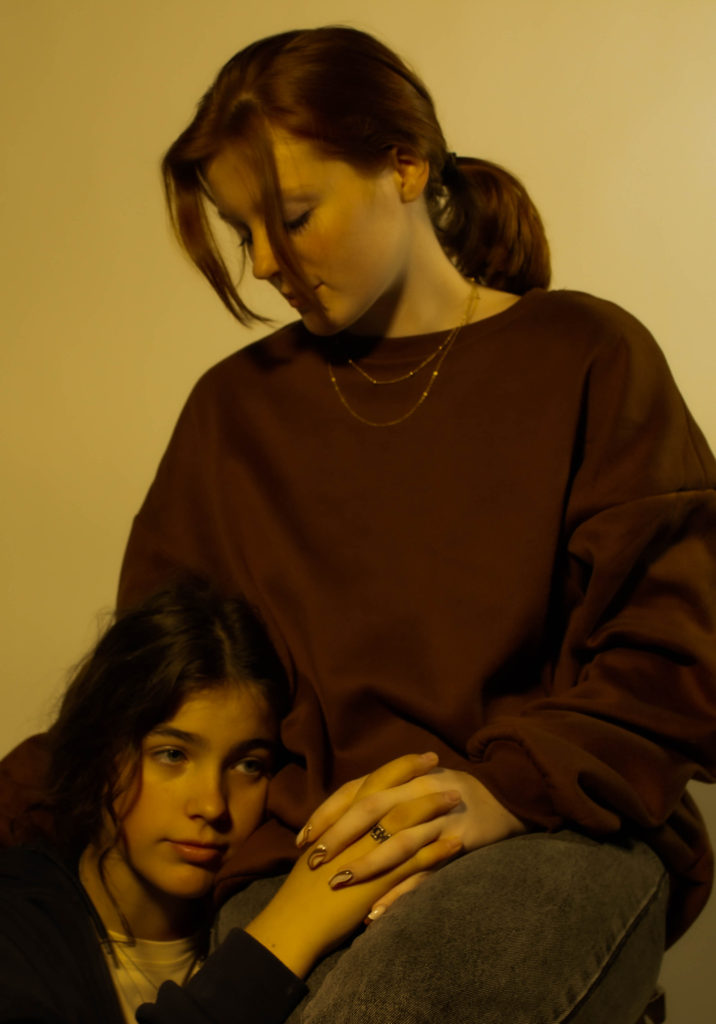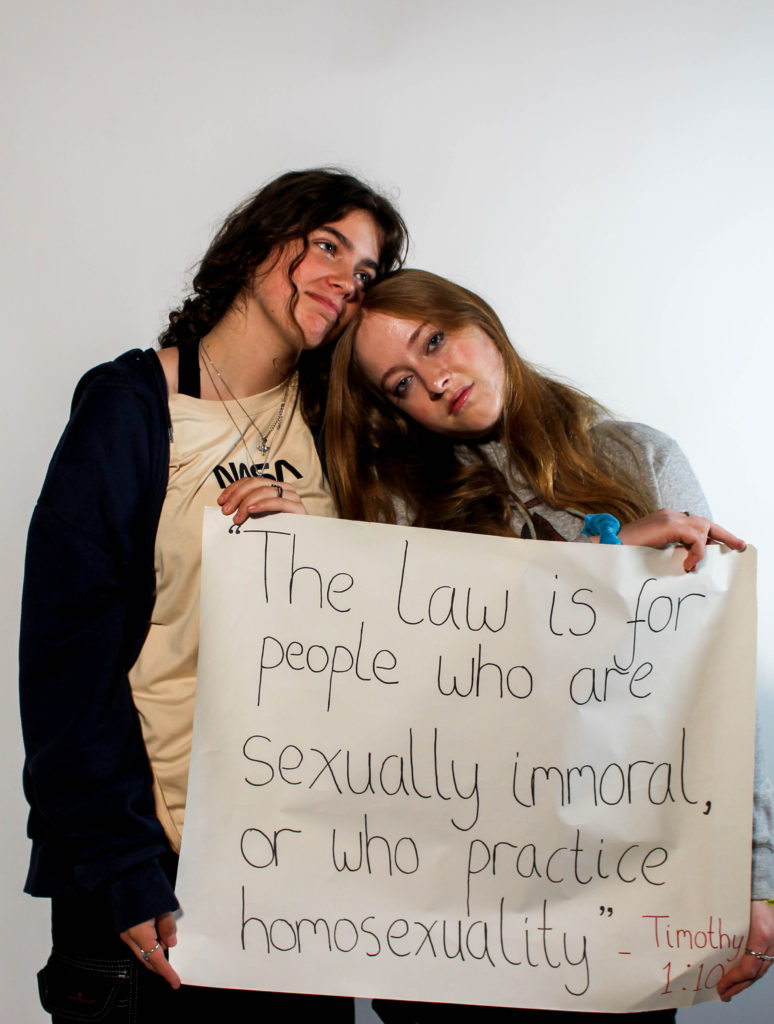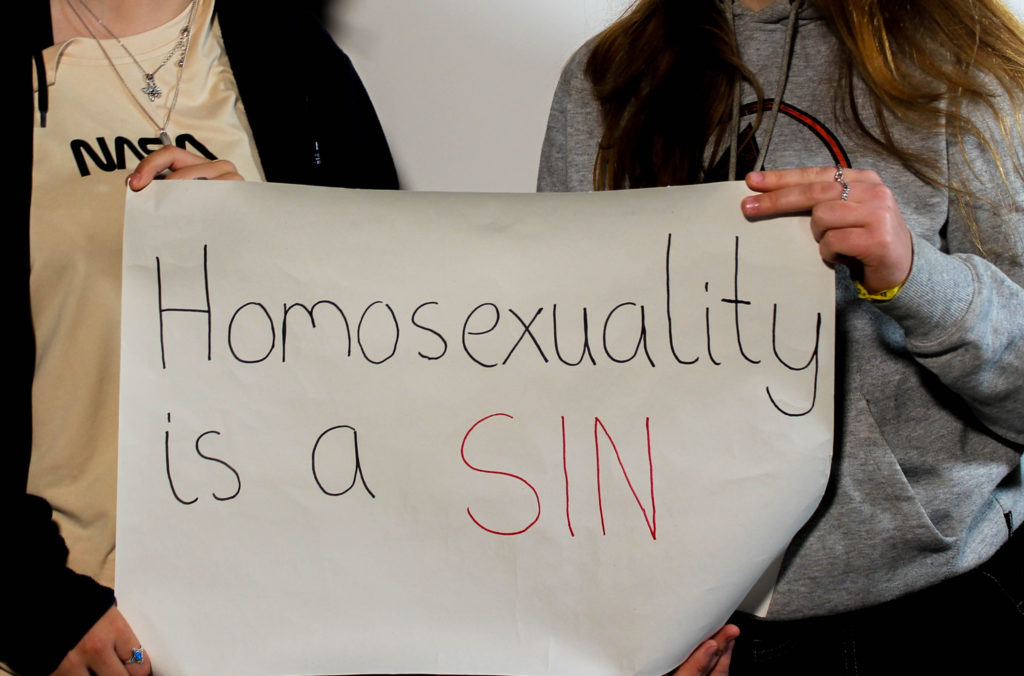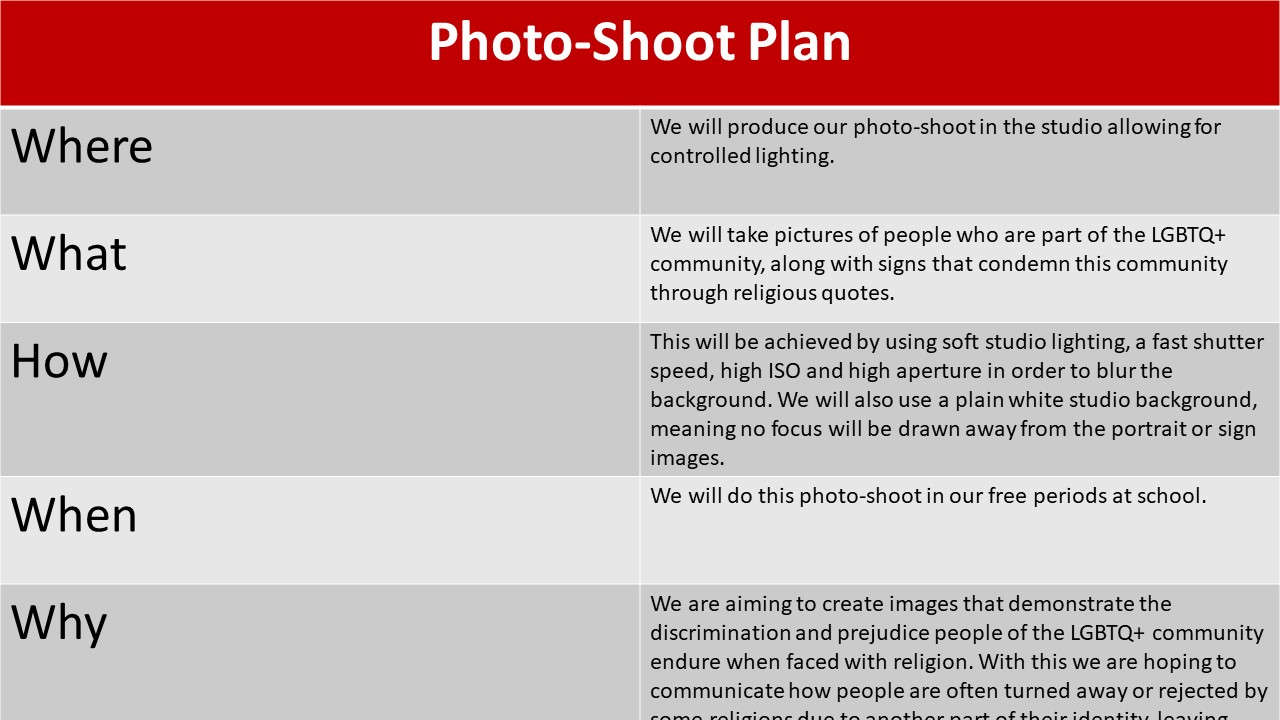
When looking for models, we decided that it may be difficult to find a good handful of young people confident enough in themselves to be photographed for being LGBTQ+. Therefore, for more comfort, we decided to use close friends that may not be apart of the LGBTQ+ community, but still understand the importance of the affects homophobia has on the community.
When taking the photos, Olivia and I took turns to direct and shoot the models. As we both have slightly different ideas and visions, doing the photoshoot together meant we could learn from each other and collect more materials than if only one of us did the shoot.
contact sheet



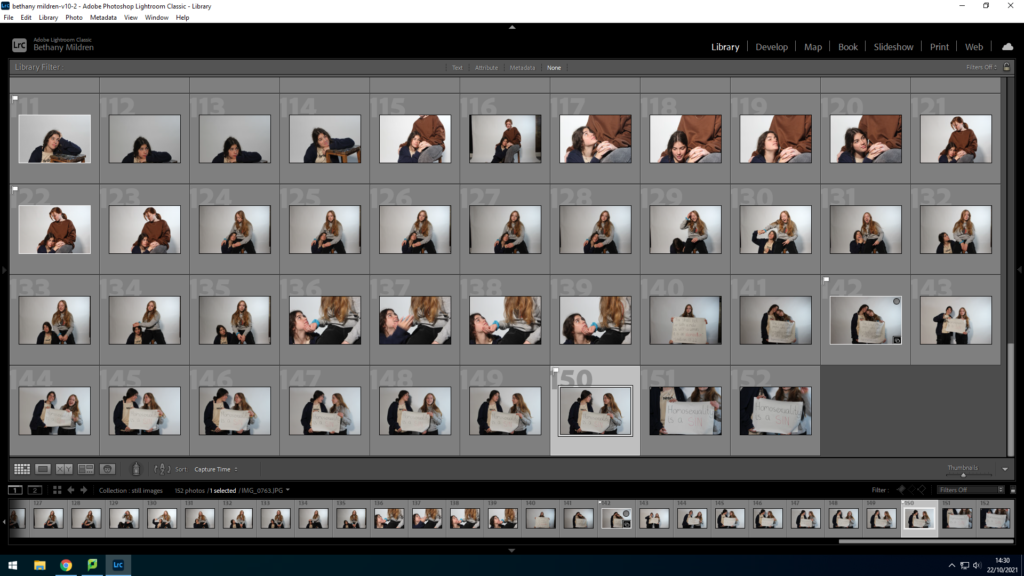
We completed the shoot over two days, using different lighting and different people to widen the variety of photos to choose for our final collection. To start the editing process, I went through the photos and flagged my favourite photos that I felt portrayed the topic well. Using clear photos of the sign, cropping out the models to draw the focus into the issues these phrases can cause. I paired them with photos of the same sex models acting happy and comfortable in their ‘relationships’.
Final photos
From the photoshoots, I selected 9 of the best photos use use in a physical collage, using techniques learnt from the embroidery workshop. I decided to add a colour overlay over 6 of the images, each of these overlays are also found to be the colours that form the LGBTQ+ pride flag. These will also be integrated with the normal colour images that mainly showcase the passages on the signs that condemn the LGBTQ+ community. By stitching together our images, it also presents a metaphor for the merging and relations of the two identities that a person should be able to share without discrimination. In addition, this assortment of colours and images can also be linked to artwork seen in religious settings, such as stain glass windows seen in many churches.

